
15.02.2016
Naomi Fisher and Dorothée Dupuis discuss the place of femininity, celebration and nature in Fisher’s work, and the idea of reaching a « guilt free » turning point in one’s practice.
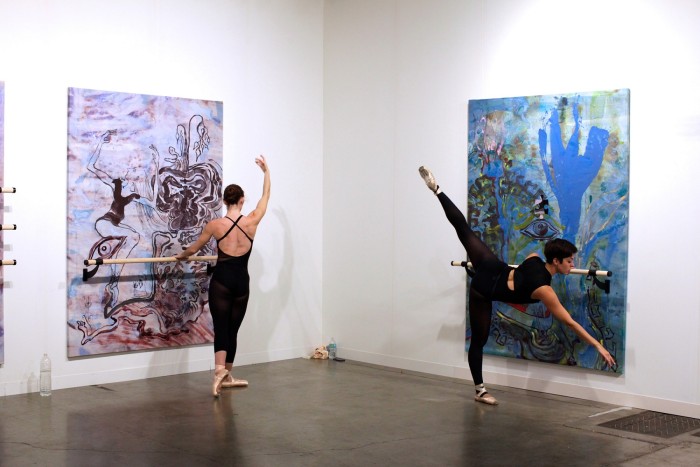
Dorothée Dupuis: Your work exists through a variety of mediums ranging from drawing and painting to video, performance, and installation. Ancient Greek theater, tableaux-vivants, Renaissance’s religious frescos, Comedia dell’arte, soap operas, science fiction, comics & literature, the pornographic and the erotic, corporate advertising and fashion photography form a part of your inspirations. Building the representation of a world in tension between various hardcore streams of powers, characters, and situations and visually relying on pop culture codes, you play with anachronisms, mixing the B-C gynaeceum with the Paris catwalk. Can you talk about the way you construct your work, narratively and formally, and how you incorporate your influences?
Naomi Fisher: B.C. Gynaeceum! I love how you trace the subjects my work touches on!
My brain filters through mass consumption of art history, critical theory, pop culture, conversations with peers, looking at new art, trolling the internet. At some point after all the intake, I hide out and try to be uncritical of what comes out of me. After privately engaging with my output, edits happen, new work gets produced.
Most important is interaction with friends who live hybrid lives: artist/curator/writer/nomad, all trying to find solutions for over-engaged lives, straddled between cities, conversing with peers scattered around the globe. The last show at Bas Fisher Invitational (the space I run in Miami) was curated by Anna Frost and Annika Kuhlman. PĿΛNΞS “explored hybrid structures that can meet the growing demand for flexibility and mobility.” This exhibition and curatorial method points to finding new structures for filtering information and existing as an artist, as a human, as a pea pod growing from altered DNA. Everything is changing. What worked in the past may not work today.

D.D.: You represent mostly female characters, engaging in actions emphasizing their “feminine essence” in an uncompromising way. One of your last films, Vizcaya (2011), was a dreamy narrative taking place in the beautiful setting of the Vizcaya castle in Miami, questioning the colonial origins of the building through the initiation tale of a young “savage” captured by the Castle’s female owner and slowly rendered to bourgeoise life, its pettiness and cruel rules revealed through the process of the“denaturalization” of the captive girl. In your work women often are literally equated to nature. Generations of feminists have on the contrary tried to “de-essentialize” women, trying to push away this natural association coming from the beginning of time. Personally, I think it’s interesting to understand the construction of the feminine. This constructed feminine remains a powerful agent of disruption in the world of patriarchy by the values and counter-values it actually embodies–against efficiency, intelligibility, and rationality. What would be your perspective on the feminism against femininity, construction against essentialism? What is your interest in woman’s life and experience as a thematic?
N.F.: Feminism against femininity is an interesting place to start… I think my feminism is first about equality in treatment and perception for all genders, races, nationalities, and economic privileges… And absolutely against femininity as a choiceless construct.

Seeing my 1999 piece, Assy Flora up now at the Rubell Collection makes me reflect on 20 year old me. The work was part of figuring out existence in a world I felt unsafe in. It expressed my love of the jungle and fascination with how plant forms are part of material culture, but hate of the essentialist connotation of “mother nature.” It was a critique of sexualized imagery by having a woman’s ass in commercial floral print underwear hover above a pile of flowers, with details of dirt and snails crawling on skin. At the time I was inspired by Hélène Cixous’ text “The Laugh of the Medusa” where she encouraged women to write their own story, however complicated it may be.
The storybook part of my childhood, living in Singapore and traveling to rain forests in Malaysia with a butterfly net while my botanist father collected plants, was a formative time. I was part of nature, but as a collector, a colonizer. An 8-year-old white girl who didn’t speak the language in the Sarawak longhouse.
Out of Africa is a film I’ve watched over and over again, where a woman tries to hold on to the fragile earth as her consciousness awakens and world collapses. There is beauty in this romantic vision of female coming of age in a foreign land, surrounded by a jungle that threatens to overtake, finding strength without a man to protect them. A female gaining consciousness is the closest thing to a threat to the colonizer in Hollywood films of that era, but it is a complicit contradiction, reinforcing the bulldozing, reordering, and renaming of another peoples’ history.
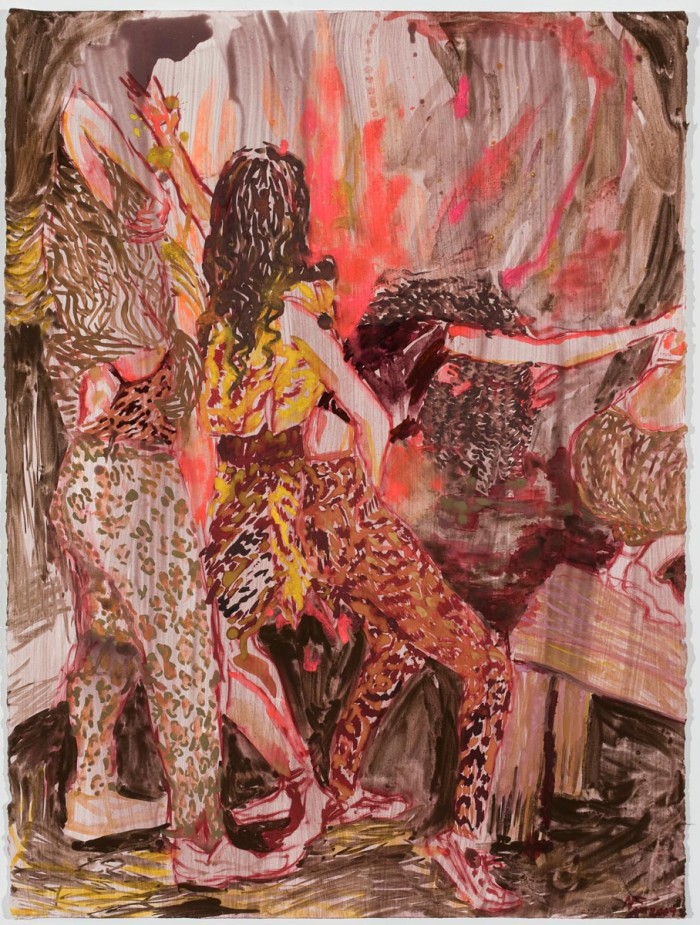
D.D.: It seems to me that actually you might be using these stereotypes to better break them and pull them from a side, challenging these ideas about the feminine and the role of women in society. Of course in times of intense, hardcore conservative backlash towards women’s freedom and liberties, such attacks to their right to dispose of their own bodies, or even a global atmosphere of slut shaming on a variety of subjects, it’s hard not to see your work as an open plea for female equality and freedom, drawing on very ancient ritual feminine traditions, whether they be sacred, pagan, aesthetic, or just linked to the organization of everyday life and global peer caring such as emotional labor. Do you feel that these days the need for challenging different female representations is more crucial than ever due to that increasing conservative context?
N.F.: Yes, absolutely. If I speak about body, sex, or nature, I am unintentionally in dialog with a complicated lineage of essentialist thinkers that are so problematic. We like to think we are beyond this, we are in a technological space that can resist limits of gender, race, economy; we are thinkers, innovators. But living in a body, we still get exhausted, sick, and horny. We expose ourselves with apps: nipple free on Instagram, lustful on Tinder.

My favorite artworks of the last year deal with new materials and technology in a way that acknowledges we are humans living in a body on this planet called Earth. iPhones make life quicker and easier, but they aren’t stopping the seas from rising, nor our bodies from aging. Liz Craft’s sculpture “Mermaid” floored me–a goddess defiled. Ida Ekblad’s alien graffiti paintings evoke teenage identity as the foundation for abstraction. Ella Plevin & Daniel Keller’s sea trash sculptures are our dystopic destiny. Katja Noviskova links the beauty of looking at animals with the need for movement in the markets. Sandra Vaka Olsen’s photograms with sunscreen marks her body’s traces beneath photos of moist technological interfaces. Lee Maida reconfiguring a photo of Matisse and a nude model reinforces that we are still under the gaze of the patriarchy. K8 Hardy’s entire Instagram feed deconstructs self-representation on a platform of infinite likes.
We need to not just challenge representation, but how the system evaluates, interprets, and places value on artwork and art world labor.
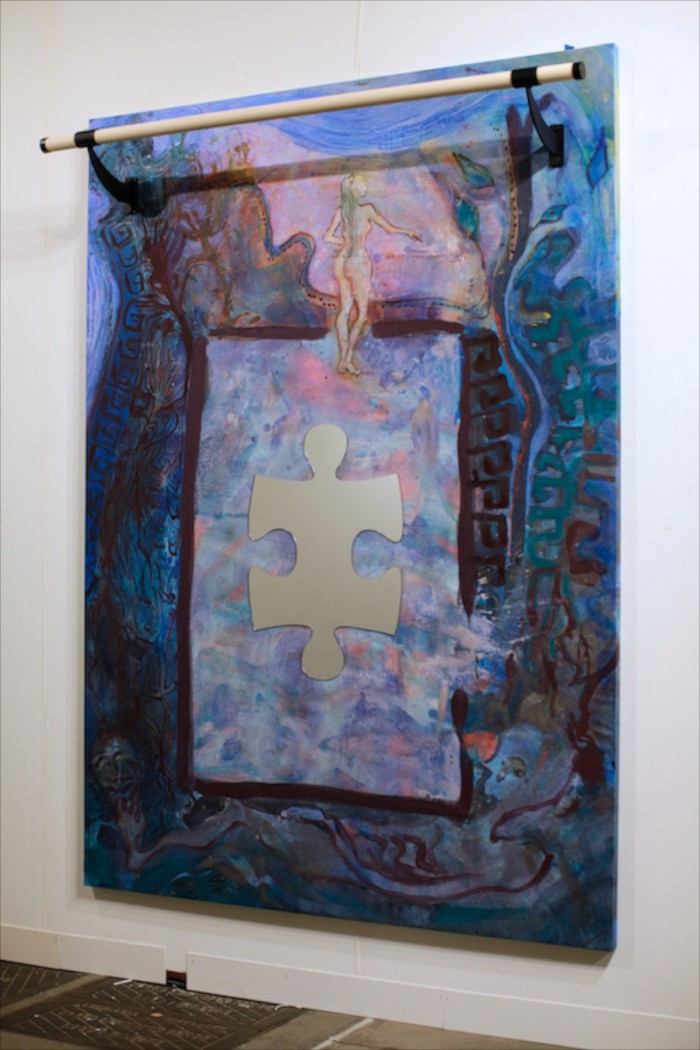
D.D.: For this issue, we were notably thinking about the “hangover” in relation to failed utopias, the idea that one day you wake up and yesterday’s hopes and fantasies vanished (may they were a bit unrealistic in the first place, conceived and discussed in times of high optimism due to alcohol and partying). But on the other hand, the hangover leaves you both more rational and dreamy, a state where guilt and freedom mix in a particular way. The other day we talked about maturity in the work, the moment one says “fuck guilt” and confronts possible misunderstandings in order to keep doing one’s work more freely, without wondering all the time about feedback, especially if you are a female artist concerned with sexuality and feminism and you leave in a Southern, provincial town of the United States. Can you expand on that? Do you think it’s an age thing, or it’s more about how the morning after hits you depending on how hard you’ve been partying before ?
N.F.: When you’ve been living freely without a safety net for a long time, there is a point of total “fuck it” that ensues. I might get sick and not have proper healthcare, but I have been doing this to live the life I want to lead. I’m an artist and work my ass off to keep going. Being an artist sometimes means being a warrior, occasionally a court jester, often a chameleon.
Now, watching the sunset over the sea from a high rise in Miami, I think this entire city ebbs and flows between the party and the hangover. The sea is rising. High tide floods the streets. But buildings keep getting built; luxury goods are the primary signifier.
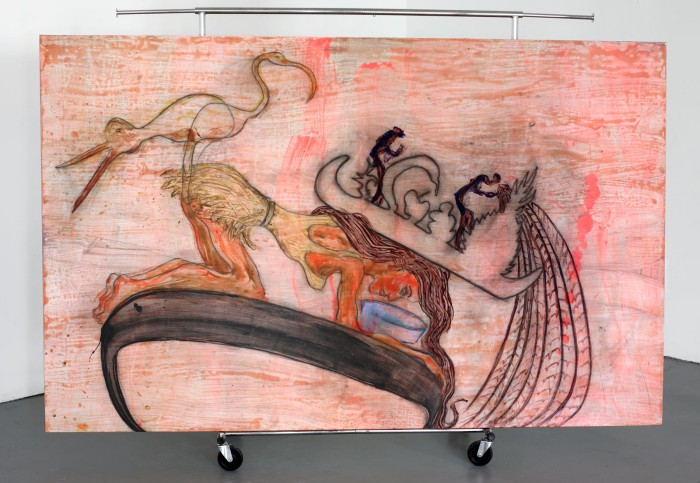
The hangover is a reckoning. Have you gone too far and hurt yourself, do you need to scale back to heal? Or is the hangover a growing pain your body and mind needed to experience?
I don’t think a universal utopia will happen in our lifetime, but it’s the carrot we are chasing at the end of a stick. The hangover shows us the party was simply a party, a catharsis to keep us going. A fractured state reminding us we need to readdress and retool our goals to get somewhere, even if its simply to the next party.
D.D.: Literality of representation in your work has always been a big thing and, in my opinion, a big strength: freedom of depicting female bodies engaging in various actions that could be labeled as scandalous or inappropriate in other frameworks of representation–I was thinking about the scandalous “fallen woman” in classical painting evoked by Linda Nochlin. Lately, you have been drifting a bit from the literal representation of the female body or at least in a more metaphoric, constructed way, through series of work that use other “feminine” fields of knowledge as other ways to critique patriarchy. I am thinking of the use of astrology in “Swamp of Sagittarius” for example, realized during Art Basel Miami Beach last December in collaboration with Agatha Wara, or your current reflection about the representation of nature in architecture, drawing on your childhood’s interest in the flora and landscape of the region (you are born and raised in Miami). Could you tell us about these two projects in relation to these ideas of marginal forms of knowledge and organization?
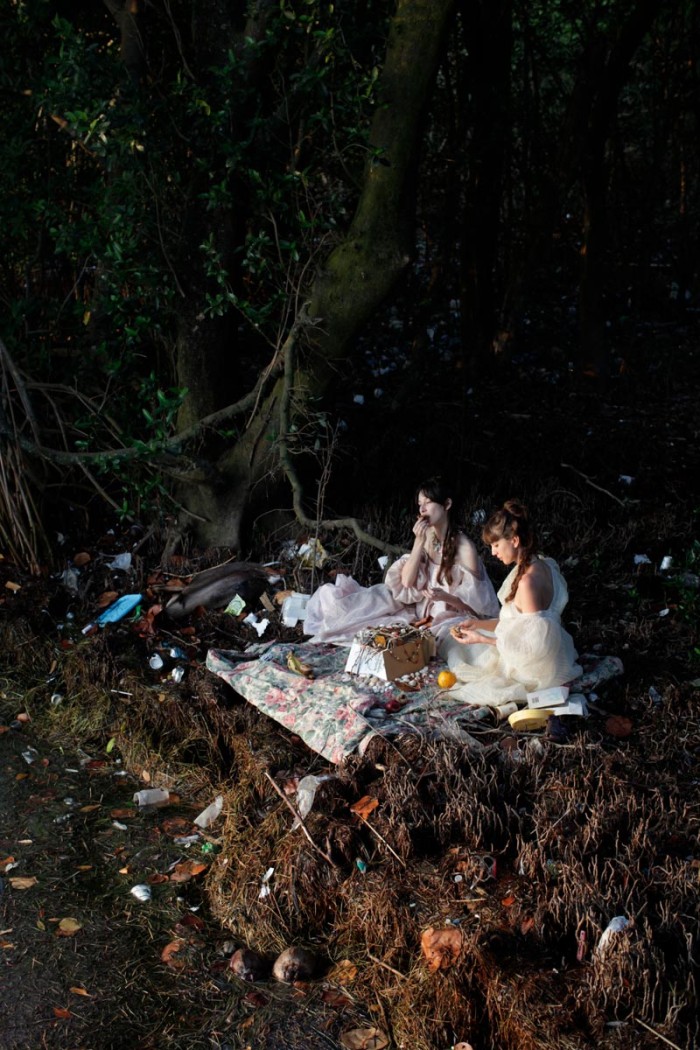
N.F.: As much as I am frustrated by the system confining contemporary art, I still love art objects and actions. In a time where dialog about rejecting the insularity of contemporary art often results in art that is even more coded, I believe it is possible to be smart and as you said, literal.
A selfie is not just a girl gazing at herself. It is a body caught in a system of representation. Screen culture and technological reduction have created a new dilemma around the gaze, how female representation cannot escape being in dialog with porn–a body is not just a body. Nor is a tropical flower just a flower when the jungle is a fetishistic stand-in for “natural,” when global warming deniers fantasize about how nature will spontaneously heal itself.
When scale becomes architectural, something new happens. I am creating an art deco inspired 5-story frieze of abstracted palm fronds. Amidst the battles within critical discourse, I rejoice in making a beautiful permanent installation that people will experience daily in city life. The visual structure is anchored by a trunk with roots that break free from the grid, implying growth into the building, as nature will surely do to all concrete over time.
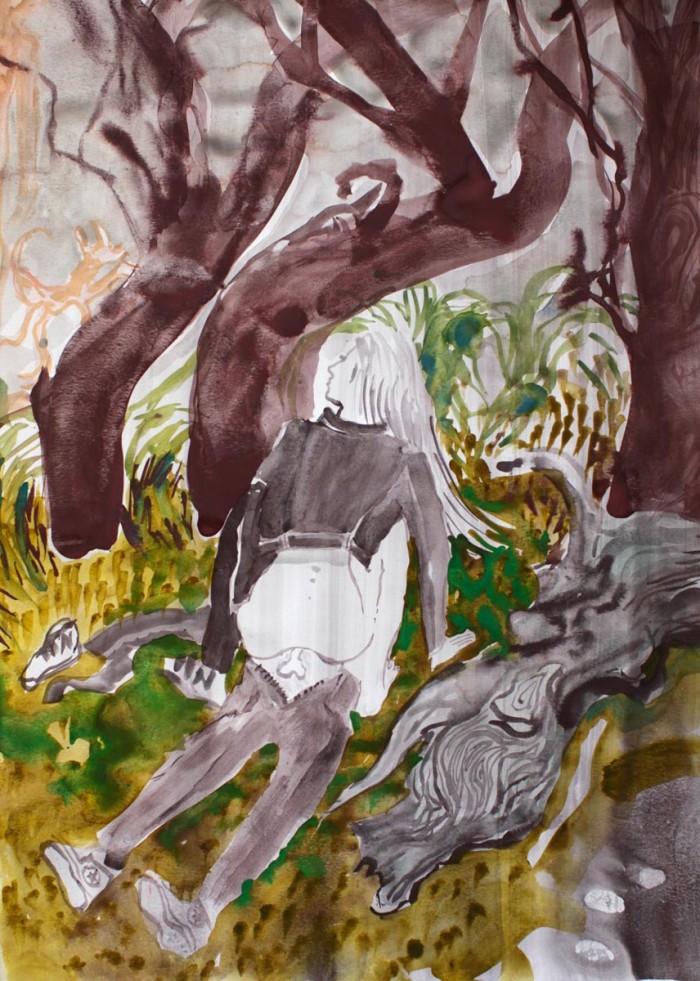
I really appreciate that you see the use of astrology in Swamp of Sagittarius as part of a feminist critique of patriarchy. As the least religious generation in centuries, ours is also invested in new age systems of spirituality. Rapid advances in technology creates schisms with deeper emotional and financial needs. Many solutions can be found through technology, but not always.
According to an article on CNN last year, 86% of fund managers failed to outperform the S&P 500. Systems have been created to understand the way markets flow, yet most underperformed the index. Swamp of Sagittarius uses the oldest algorithm to gain insight into astrological compatibility with artists, artworks, and galleries before someone makes an investment. Agatha Wara and I created a new art advisory firm to give results based on centuries of ancient knowledge, providing astrologically-driven forecasting solutions for contemporary art. Swamp of Sagittarius can help.
Comentarios
No hay comentarios disponibles.